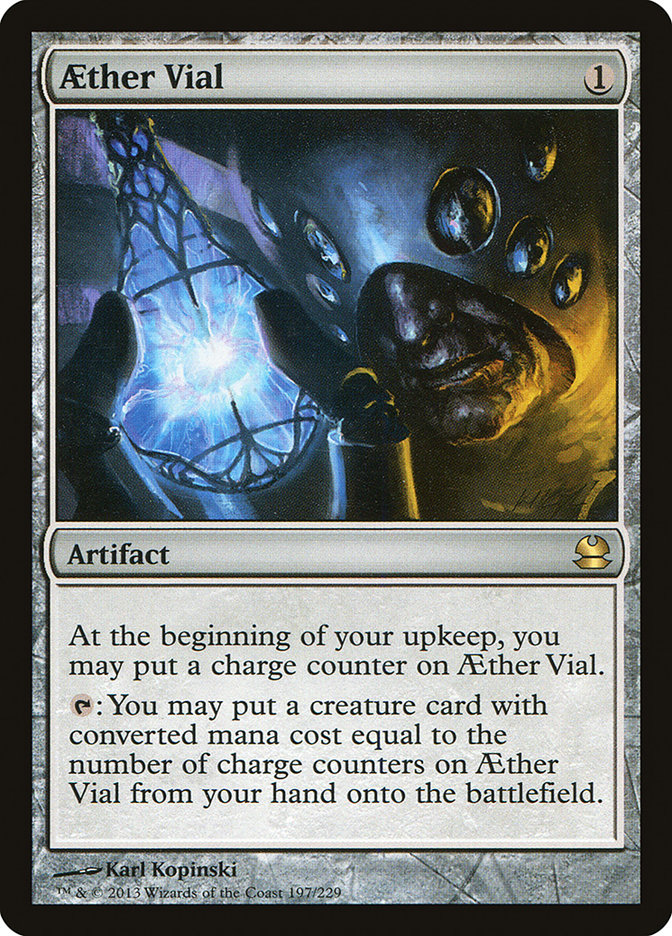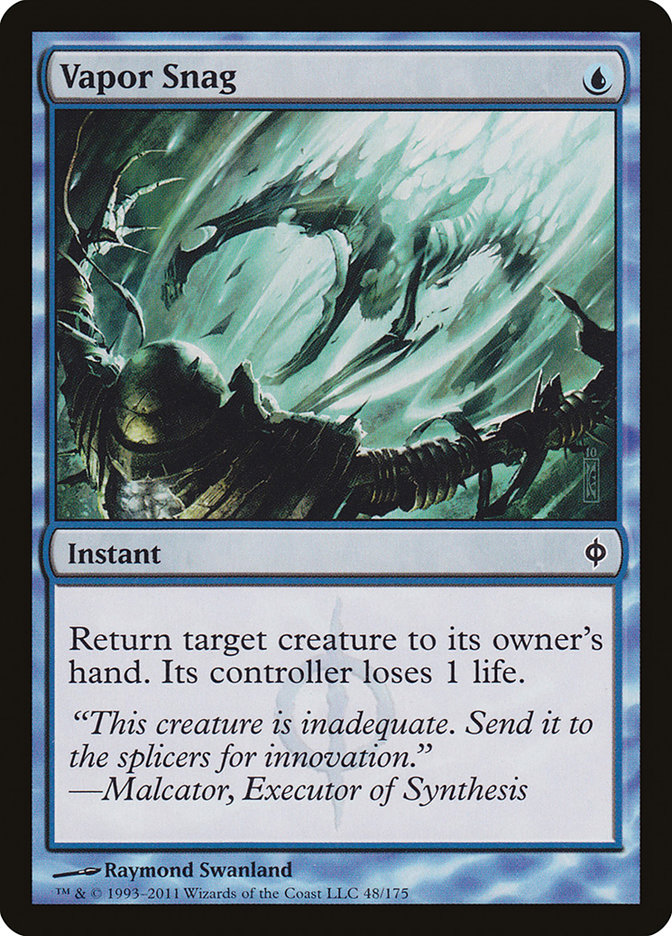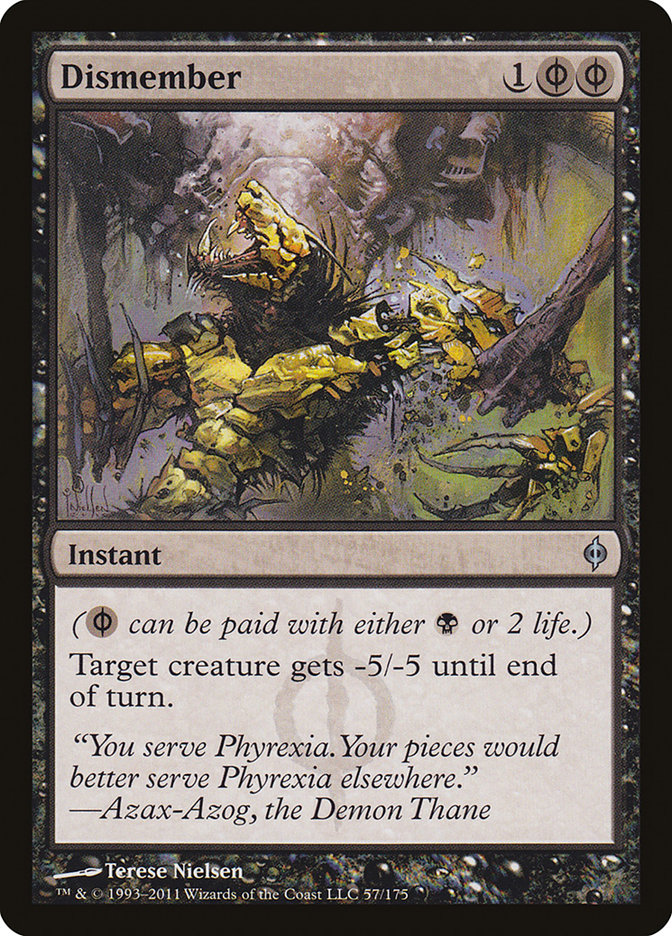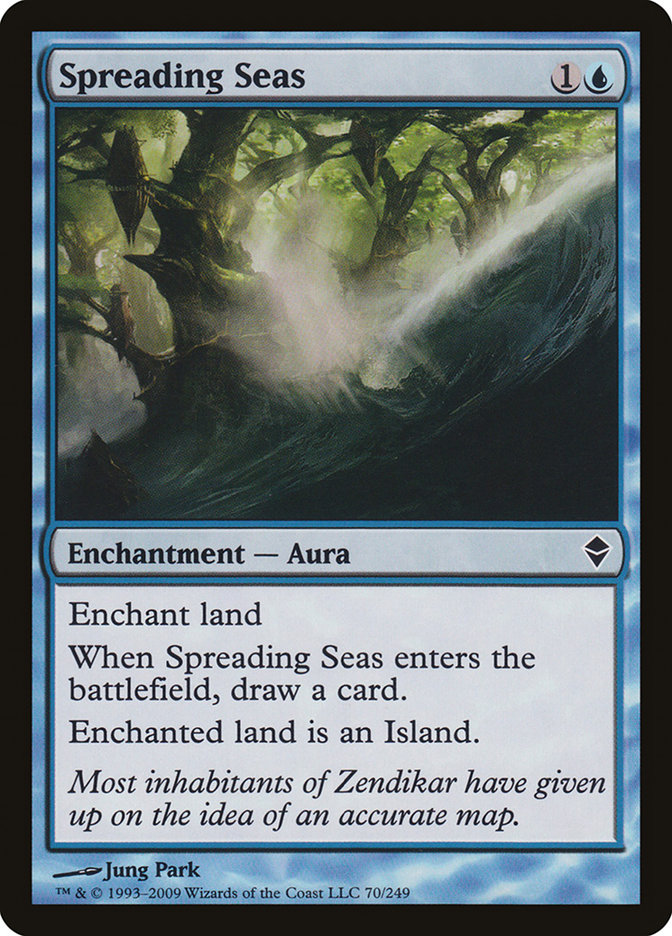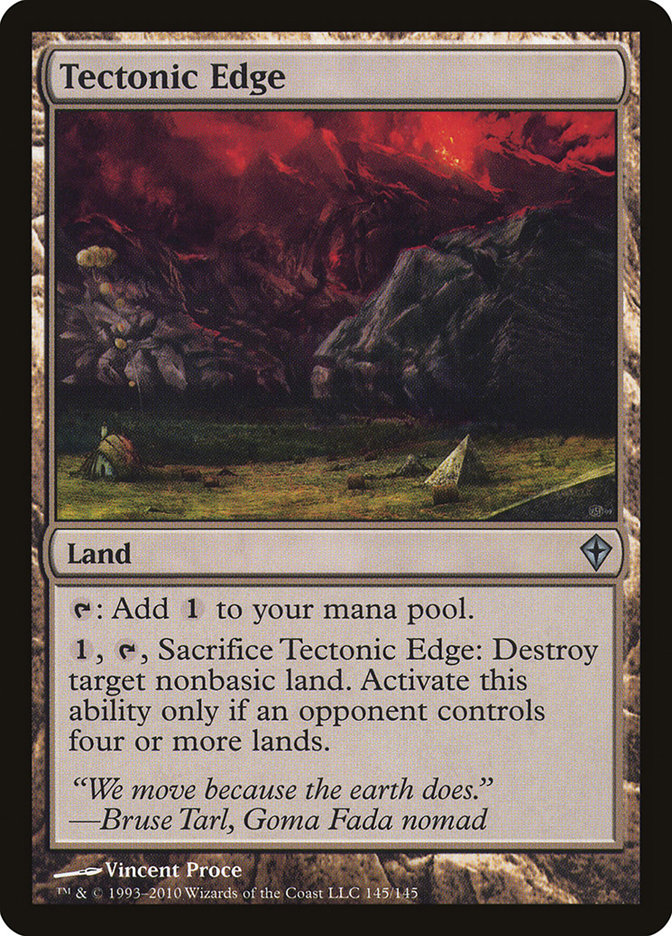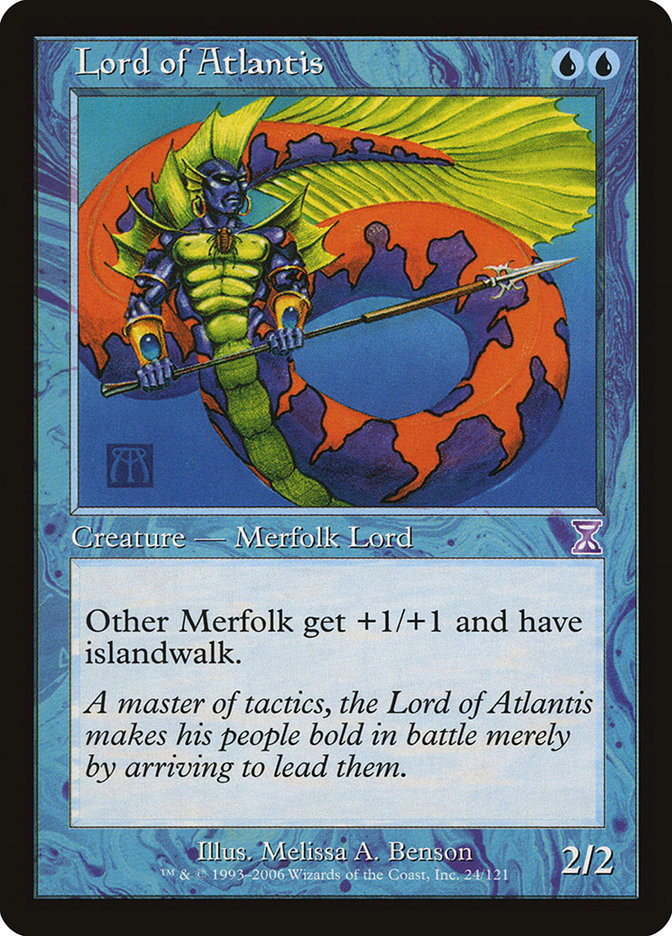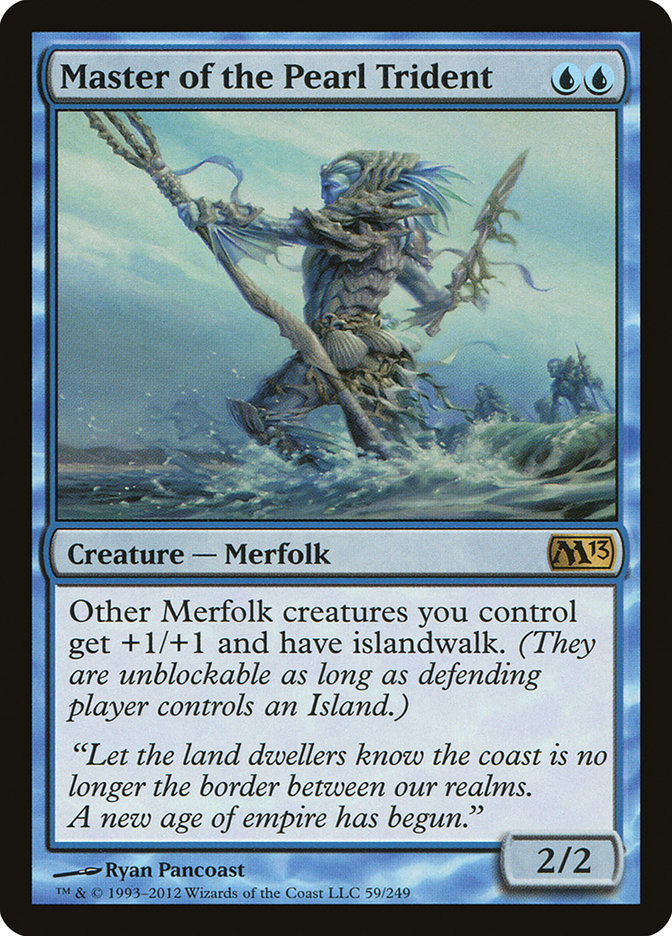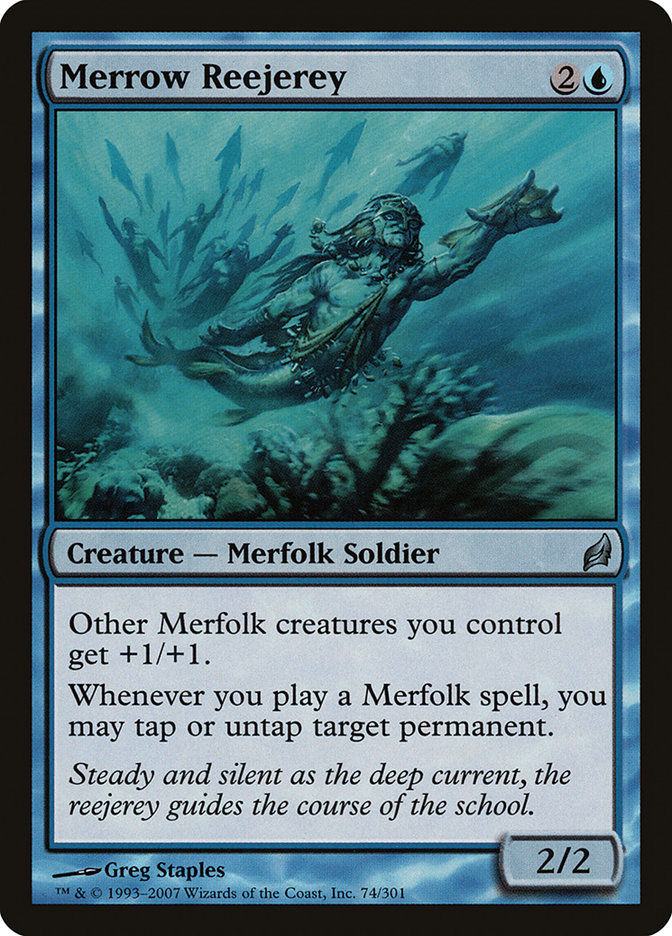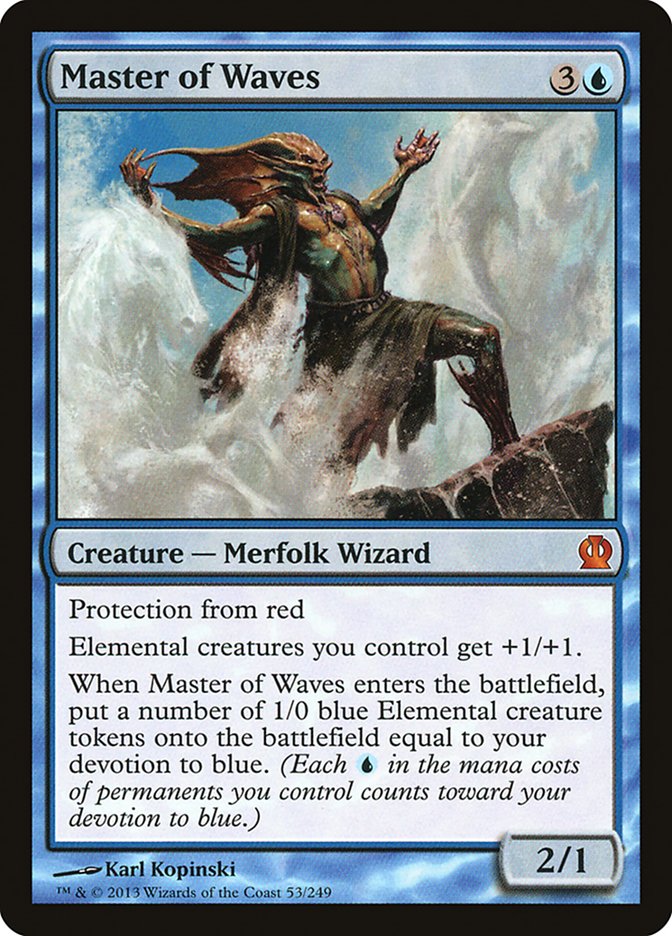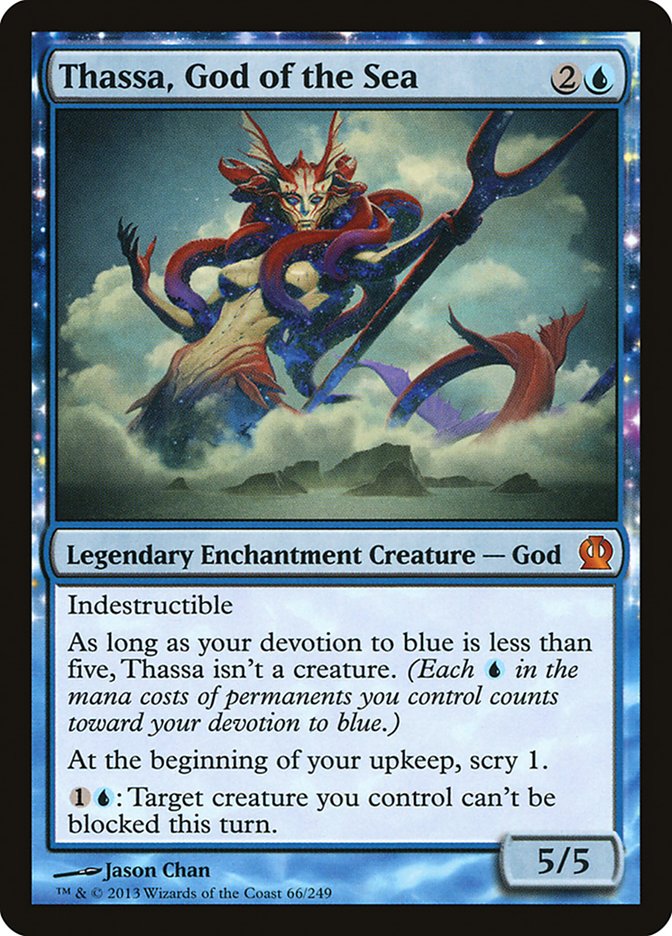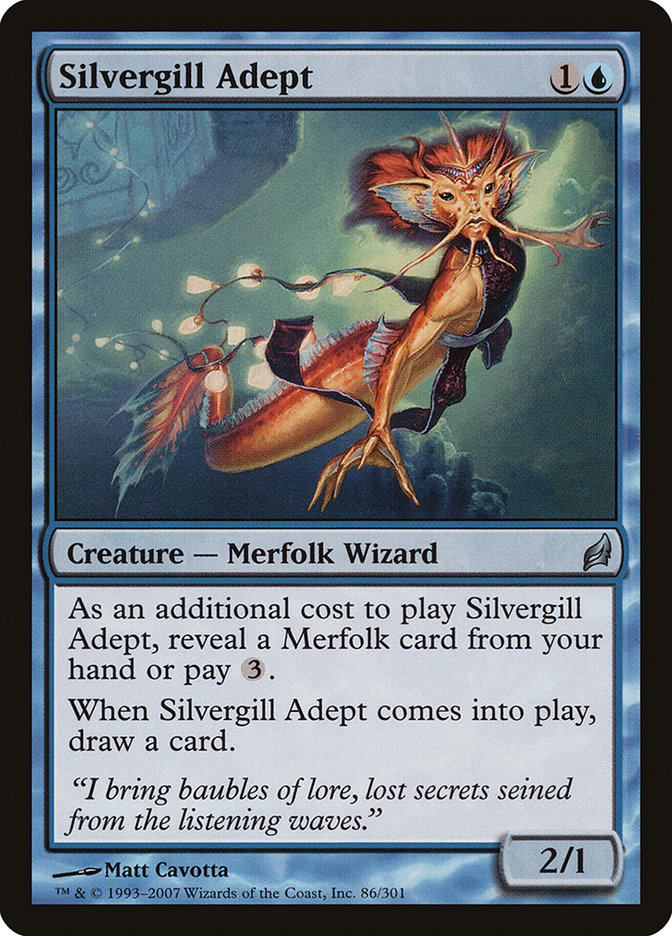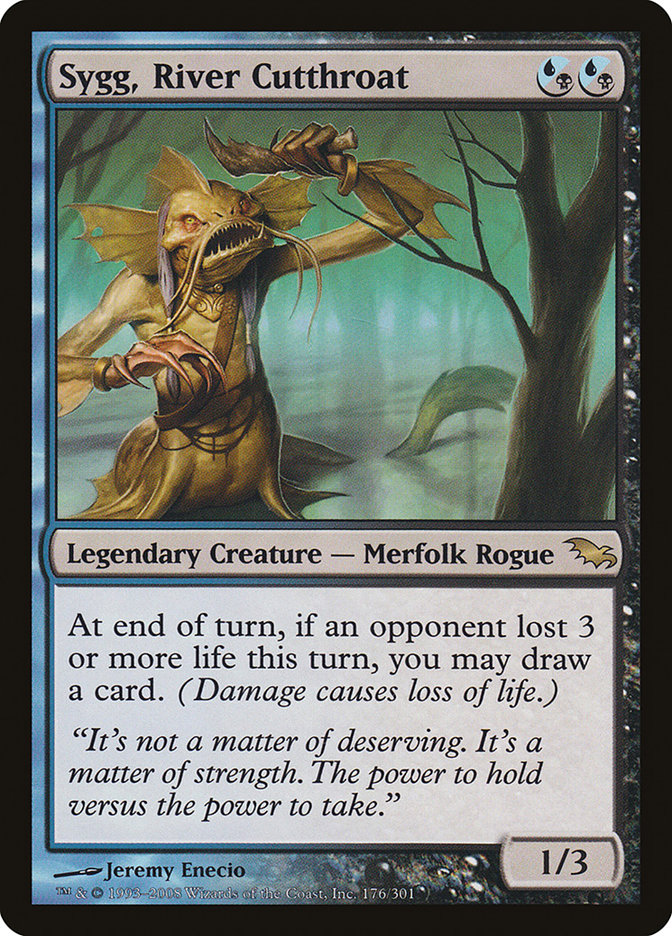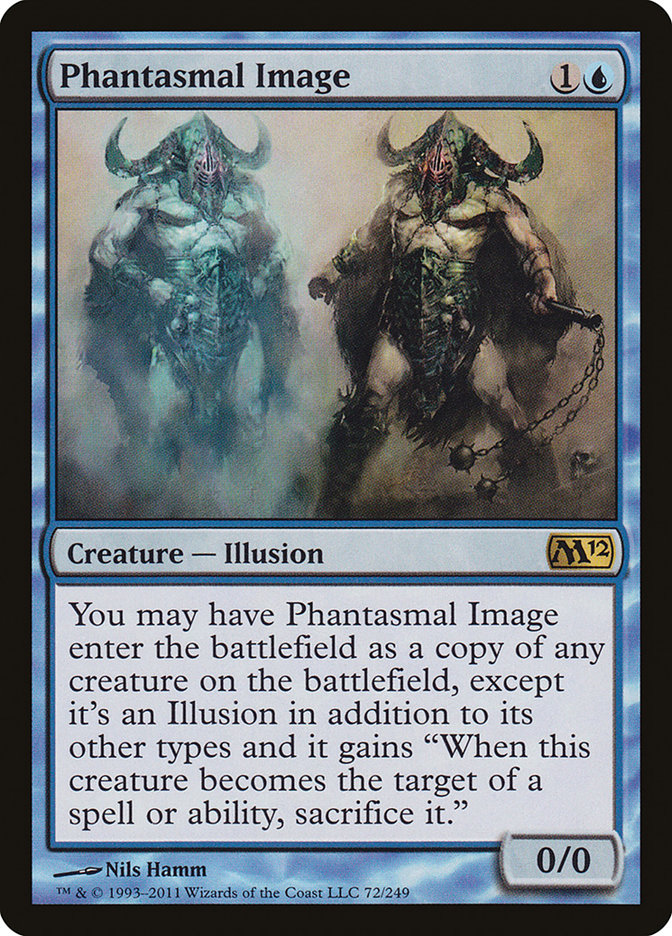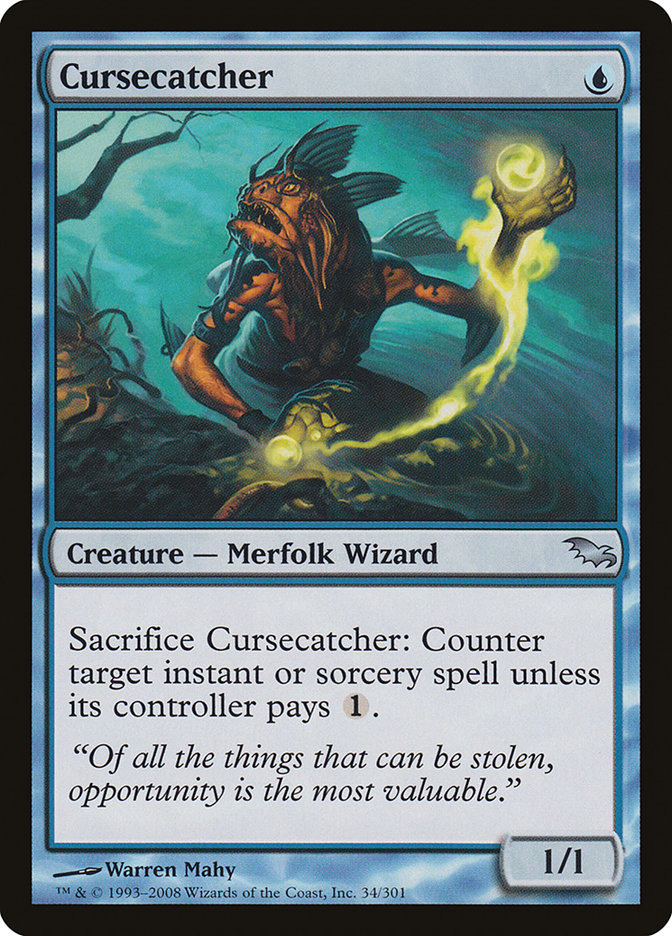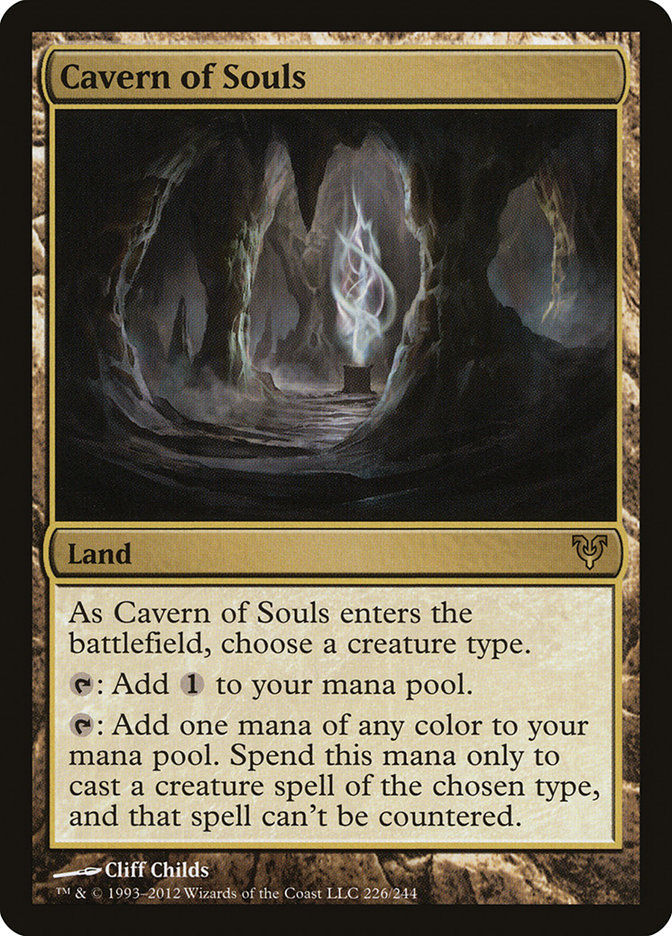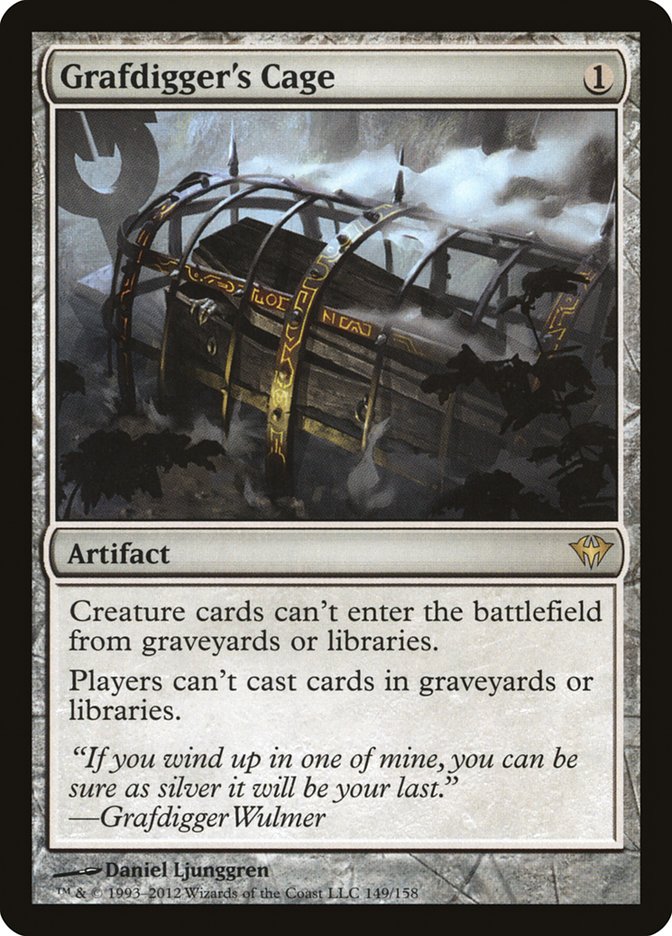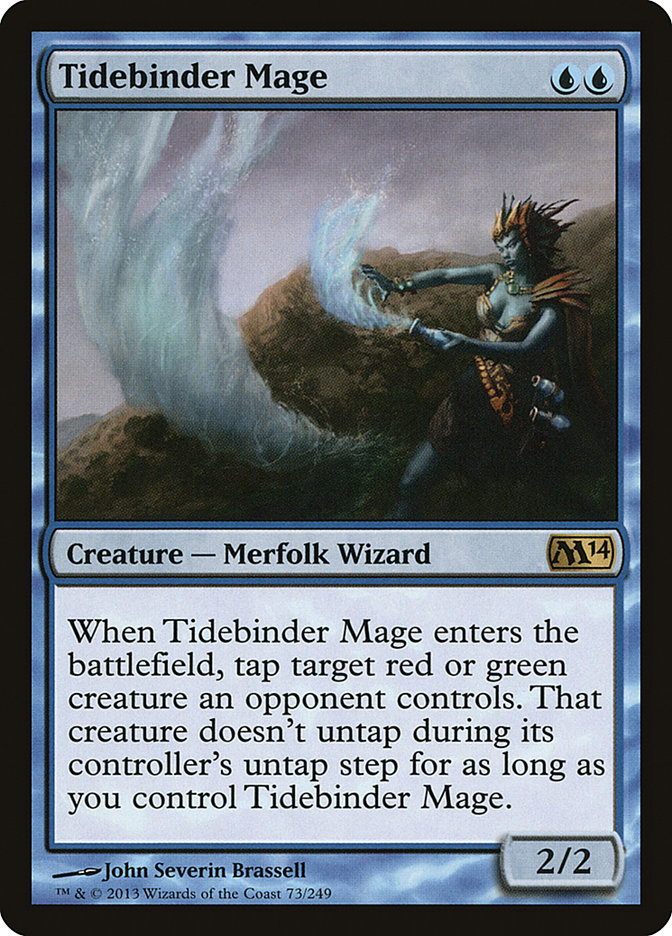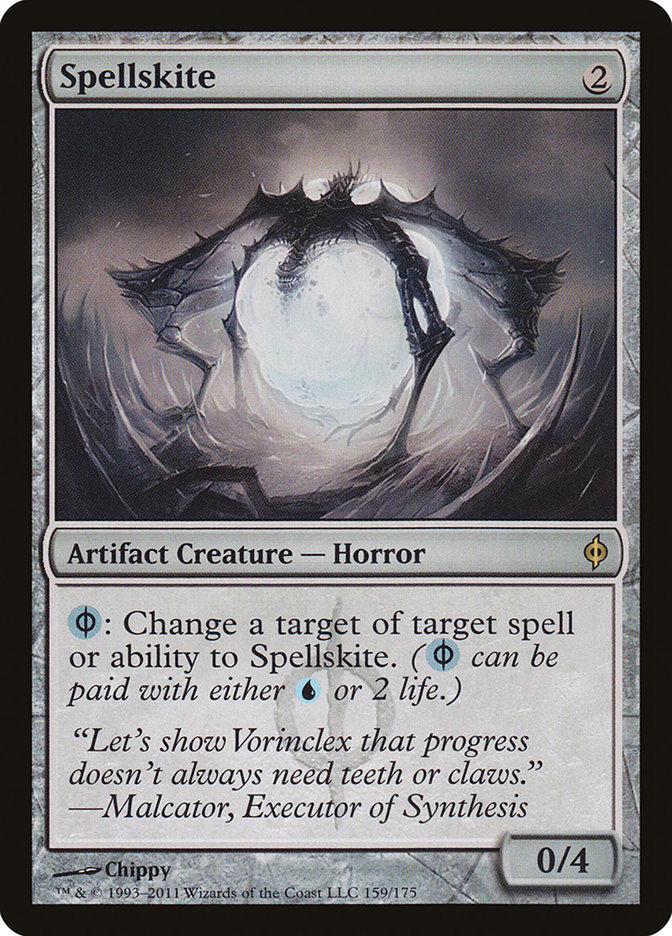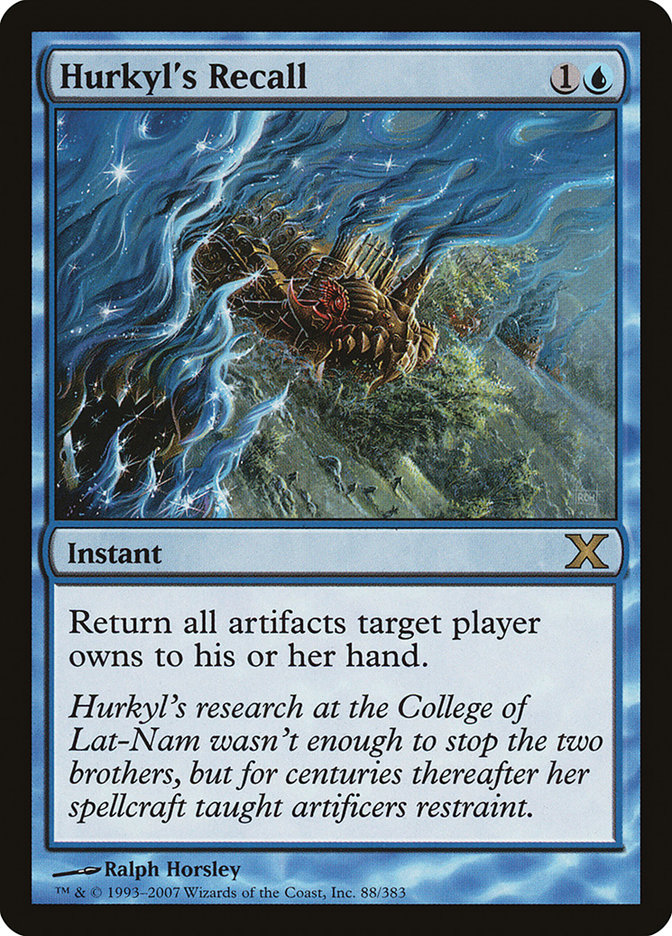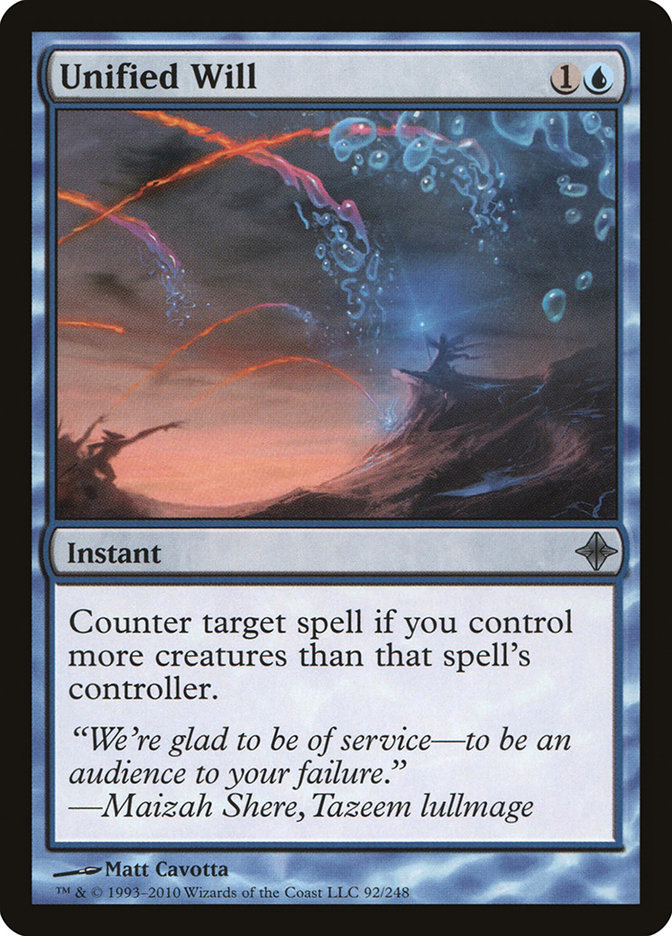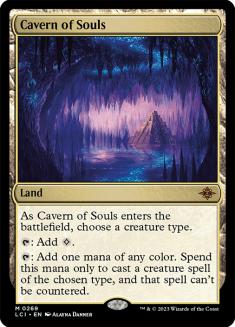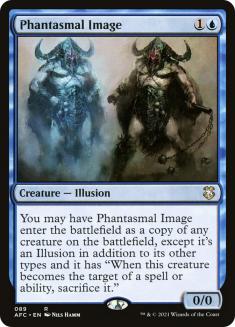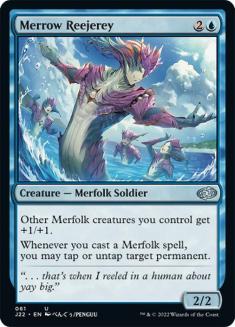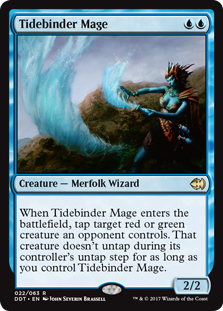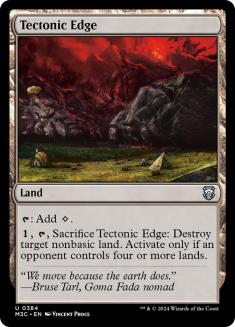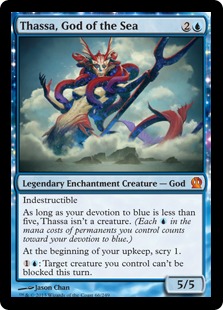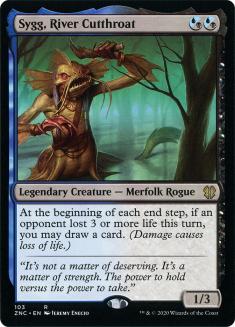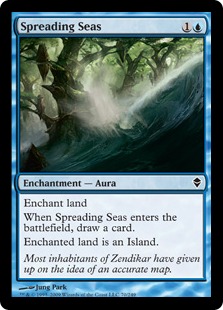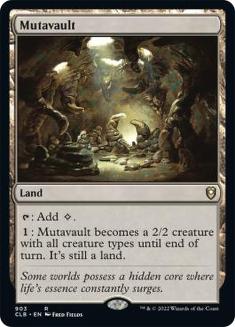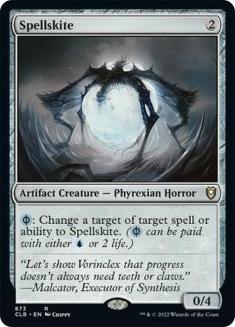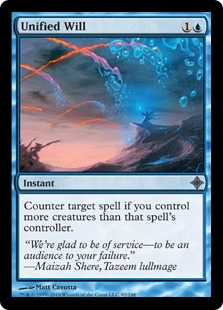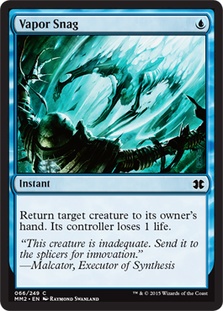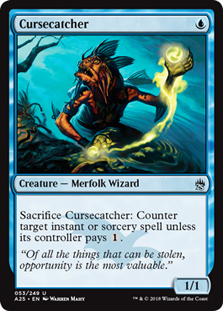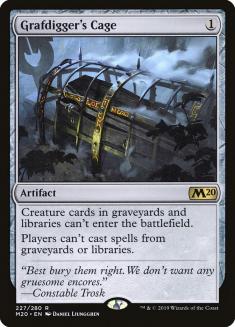I imagine you read the title before clicking on the article, so I’ll get right to the point. I love playing Merfolk in Modern. Just under two months ago, I decided that I wanted to pick a Modern deck to play and stick with. Grand Prix Richmond and the Modern PTQ season are on the horizon, so I wanted to get started as soon as possible.
After digging through decklists for hours, I came to the conclusion that every deck was boring. I tried to give Storm a chance, but it severely underperformed in both testing and goldfishing. Time was being wasted, so I needed to pick something fast. I didn’t want to play mirror matches all day, so I settled for Merfolk. I’m not sure what exactly drew me there, but it’s where I ended up.
Initially, I thought Merfolk was relatively underpowered but still deserved a fair chance. I tested against a few different decks in real life and took the deck through the paces online. The deck quickly surprised me with how well it was performing. With very high consistency, I was winning the game on turn 5 with removal and counterspells for backup.
Today I want to share with you my current list that is the result of a lot of testing, especially online. I’ll review the specific card choices, flex slots, and give you a sideboard guide for the most important decks in Modern. Presented to you below is my current list for Merfolk. Keep in mind that I change around a couple cards in the flex slots basically every time I play the deck so nothing is stagnant. The list is also the combination of my own work with input from other Merfolk players, fellow StarCityGames.com writer Anthony Lowry, and my friend Rob Cusick.
The Deck
Creatures (27)
- 4 Lord of Atlantis
- 4 Merrow Reejerey
- 4 Silvergill Adept
- 4 Cursecatcher
- 1 Sygg, River Cutthroat
- 2 Phantasmal Image
- 4 Master of the Pearl Trident
- 2 Thassa, God of the Sea
- 2 Master of Waves
Lands (5)
Spells (28)
Sideboard

Let’s break the deck down piece by piece.
The Maindeck
We’ll begin with the maindeck.
4 Aether Vial
An obvious inclusion, it gives you the most explosive draws, gets you through countermagic, and can do some pretty cute things with cards like Cursecatcher, Phantasmal Image, and Merrow Reejerey.
4 Vapor Snag, 2 Dismember
The removal spells of choice for this deck. The package leans toward Vapor Snag since it has a lot more game against aggro and synergizes well with other cards in the deck like Sygg, River Cutthroat and Silvergill Adept. Dismember is essentially a catchall for any creature that might get in the way.
3 Spreading Seas, 1 Tectonic Edge
Your maindeck land destruction spells for keeping people honest. When people are trying to play four colors, cast cards with three red mana symbols, or attack with man lands, you can get tempo by both setting them behind and cutting them off of colors. Spreading Seas also shines as a way to take advantage of the Islandwalk granted by some of your lords, which is how you win most matchups where the board becomes clogged rather quickly. Aquitect’s Will was a consideration, but drawing a card every time and crushing decks like Jund and Tron set the balance very far in favor of Spreading Seas. We originally had four in the main since it’s a very good card, but in a lot of matchups it can be painful to have a hand with two.
4 Lord of Atlantis, 4 Master of the Pearl Trident
Essentially the same card, except that Lord of Atlantis also pumps your opponent’s Merfolk. That rarely matters, but sometimes you play against the mirror, an errant Wistful Selkie, or a Threads of Disloyalty. These guys assist in quickly making all of your creatures massive, as well as making them all unblockable against Islands or with Spreading Seas.
4 Merrow Reejerey
The other lord, which is generally worse than the other eight lords but can sometimes do some cool things. Working together with Aether Vial to unload your hand, you can use it to play a bunch of threats even when short of blue mana, and it can tap some annoying blockers that might get in your way. It also fills a relevant spot on the curve as you try to get Aether Vial to four for your Master of Waves.
2 Master of Waves; 2 Thassa, God of the Sea
The haymakers of the deck. They are different cards but serve a similar purpose. Essentially, they operate on a different axis from the rest of the deck. They try to pull you back ahead when you start to fall behind, grind out advantages in certain matchups, and cement a game that you were probably winning but needed some icing on the cake. These were late additions to the deck, but they really give you something else powerful to do while your opponent tries to one-for-one you. With both, you only really want one most of the time and sometimes not even that many, so two felt like the perfect number. If you feel like you want more, though, a third of either is not unreasonable, especially in the sideboard. I’d probably shave a Merrow Reejerey or Phantasmal Image to make room.
4 Silvergill Adept
One of my favorite cards in the deck, though it makes playing with Aether Vial pretty hard. Late in the game, you still don’t really want to pay five to play it, so it becomes a tough decision whether to put Aether Vial on three or leave it on two. Regardless, it becomes big thanks to your lords and allows you to quickly move through your deck without skipping a beat. It also only costs a single blue, which helps if you are stuck on a clot of double-blue spells.
1 Sygg, River Cutthroat; 2 Phantasmal Image
These numbers (as well as their existence in the deck) move around a lot, but one Sygg has certainly become a permanent fixture. Phantasmal Image acts as additional copies of your lords as well as cantrips with Silvergill Adept. In many matchups, the drawback doesn’t even matter because removal is removal anyway. It isn’t always true, especially in matchups with Pestermite, but it holds true pretty often.
Sygg, River Cutthroat is an awesome creature who was also a late addition. It serves as another creature in the two-drop slot that can buff up the devotion for Master of Waves and Thassa. It’s typically easy to trigger its ability at least once, and against fetch lands, shock lands, Dark Confidant, and other cards that cause people to damage themselves often, it can sometimes draw two cards before it can even start attacking. Having one power is a bit disappointing, but overall it has performed much higher than expected.
4 Cursecatcher
Cursecatcher fills a lot of roles. It allows you to get on the board quickly when you don’t have an Aether Vial, protects your relevant spells from counterspells, and can prevent annoying things like Thoughtseize if the time is right. With Aether Vial, you can often catch people off guard as well if they aren’t thinking about the card.
3 Mutavault
Most people would expect four, but Mutavault wasn’t pulling its weight like I had originally expected. It’s still a great card to have in the deck, but having another land that can cast your lords or the first Tectonic Edge is much more important than the extra Mutavault usually is.
1 Cavern of Souls
This replaced the fourth Mutavault in the deck. I felt about one blue source short while playing the deck, but I also wanted an extra utility land. Cavern of Souls fit well in that area, and it works particularly well with Master of Waves, allowing you to tap out without getting completely destroyed by counterspells.
The Sideboard
Now let’s move on to the sideboard.
2 Grafdigger’s Cage
Originally Relic of Progenitus filled this slot, and depending on your metagame, you may want to switch back. I still wanted graveyard hate but figured that I would rather have another card against Birthing Pod instead, so I met in the middle. It’s not as good against Tarmogoyf, but you weren’t really boarding it in for those matchups anyway. It’s also worse against Living End, but I found that matchup to be pretty good regardless. Granted, that was when I still had Remand in the maindeck, so if there is a lot of Living End in your metagame you may want Relic instead.
3 Tidebinder Mage
This serves as a great sideboard card that can be brought in for a lot of matchups. Against aggro, green-based midrange, and certain red tempo decks, it serves as a great creature. It’ll typically eat a removal spell, but even then you usually get some tempo out of it. And if they don’t have the removal spell, it helps stem their aggression as well as get through your own damage. Depending on your metagame, this slot may be better served as a Kira, Great Glass-Spinner, but it has severely underperformed for me. You can’t grow it with your lords, and it often just dies to a Combust or Abrupt Decay. Tidebinder Mage is also a bit more versatile.
3 Spellskite
This is mostly for the random combo decks in the format like Burn, Splinter Twin, and Auras. In my opinion, the sideboard of Merfolk is much more important than specific maindeck choices, and you want as many cross-applicable options as possible. Spellskite pulls a lot of weight against all of those annoying matchups, so it was an immediate inclusion.
3 Hurkyl’s Recall
Affinity is a terrible matchup. You will almost never win game one. At first I planned to just give up on the matchup since I figured I’d need nine cards to maybe have a chance. What I found in a lot of focused testing was that with three or four Hurkyl’s Recall and some smart mulliganing that you can win post-board against Affinity as long as they don’t dump their hand on turn 2 and you play around Whipflare.
1 Spreading Seas, 1 Tectonic Edge
Additional land destructions spells for the matchups where you want them. I typically prefer not to have a land in my sideboard, but in this case it has performed well. If you move the fourth Spreading Seas back into the main, you definitely want a second Tectonic Edge in that sideboard slot.
2 Unified Will
Some matchups come down to a race where they are just trying to resolve one big haymaker before you kill them, so a timely Unified Will can really swing the game in your favor. It’s also pretty strong against decks like U/W/R Control and Splinter Twin where they aren’t necessarily playing a haymaker but countering something like a Vendilion Clique can be key.
I’ve considered whether or not Thassa’s Rebuff should fit into this slot a lot lately. Basically, the argument for Unified Will is that in a lot of the matchups you want the counterspell there is little difference between having more creatures and just having a solid devotion. This means that you’d rather have the hard counter. You also are sometimes countering a one-mana removal spell or Grim Lavamancer when they have made a bunch of land drops, so a taxing counter just won’t do the job.
Overall, I think it depends on your metagame and which matchups you want the counterspells for.
The Matchups
Here’s a handy guide for how sideboard in some of the most important matchups.
Jund
This matchup is generally slightly favorable in game 1. They try to one-for-one you with removal and clock you, but you generally apply threats quicker than they can kill them while messing with their mana base, drawing extra cards, and gaining tempo against their creatures.
Out:
In:
Tidebinder Mage can lock down Deathrite Shaman and Tarmogoyf as its main targets while being another cheap and efficient threat. Phantasmal Image is mediocre because it can often be difficult to rely on it to be something specific that you want, and Merrow Reejerey is pretty expensive considering it gets eaten by basically any removal spell in their deck. They’re generally going to bring in some kind of sweeper, more one-for-one removal spells, and some four-drop haymakers like Olivia Voldaren or Huntmaster of the Fells. Try to always conserve a Dismember or a pair of Vapor Snags for those guys if you can and just keep the pressure on.
Splinter Twin
Another really good matchup game 1. Sometimes they have the combo and you don’t have an answer, but you just want to always represent something and keep the pressure on. Make the opponent get aggressive with Cryptic Commands and slowly chip away.
Out:
In:
This matchup is one of my favorite ones to play after sideboarding. They generally save combo pieces and use Snapcaster Mage alongside Cryptic Command and a bunch of cheap removal to grind you out while using Grim Lavamancer and Vendilion Clique to lock up the game. Spellskite is good versus any remaining combo pieces, Lightning Bolts, and Grim Lavamancers. Unified Will can work with Vapor Snag to deal with essentially anything you need, and Tectonic Edge can make Cryptic Command awkward. I used to try to cut them off of red mana using the full set of Spreading Seas and two Tectonic Edges, but that only works if they’re still all in on the combo after sideboard.
U/W/R Control
Everyone tells me that this matchup should be terrible for me, but I find it to be 50/50 across the board. Just stay aggressive, don’t leave any open holes, and don’t walk into situations where a removal spell on a lord will combine with a removal spell to blow you out. The same applies after sideboarding as well, where you try to attack their mana a bit more aggressively and invalidate their Lightning Bolt effects with Spellskite.
Out:
In:
Birthing Pod
You don’t need to be as aggressive in this matchup as long as you have an answer to a combo attempt and keep control of the board. Melira Pod often sports a set of Path to Exiles, so be careful about that. Most important here is to make sure you don’t die and just wait until a Spreading Seas with a lord will help you turn the corner. Post-board you get even less aggressive because you’re able to turn the corner and control their combo even better.
Out:
In:
If you’re scared of Melira Pod casting Thoughtseize, you can leave a number of Cursecatchers in over Thassa and Master, but I prefer it with that setup.
I think I covered everything that I wanted to get out. For anyone who is wondering, I don’t splash a color because I don’t want to hurt my mana or take damage from my lands and believe that blue has all the tools it needs to succeed. The deck is incredibly powerful in its ability to play any role. You can be a turn 5 aggro deck, a midrange tempo deck, or an all-out control deck, sometimes flawlessly playing multiple roles at once.
If you’re just getting into Modern, I highly recommend that you give this deck a try. It isn’t incredibly difficult to pick up, and it’s capable of some really powerful things. If there’s anything I didn’t cover that you want to ask about or I confused you in any way, just let me know. If you’re going to Grand Prix Richmond, hopefully I’ll see you there. Until then I’ll continue stomping on other people’s Islands and letting Master of Waves teach them how to surf!

